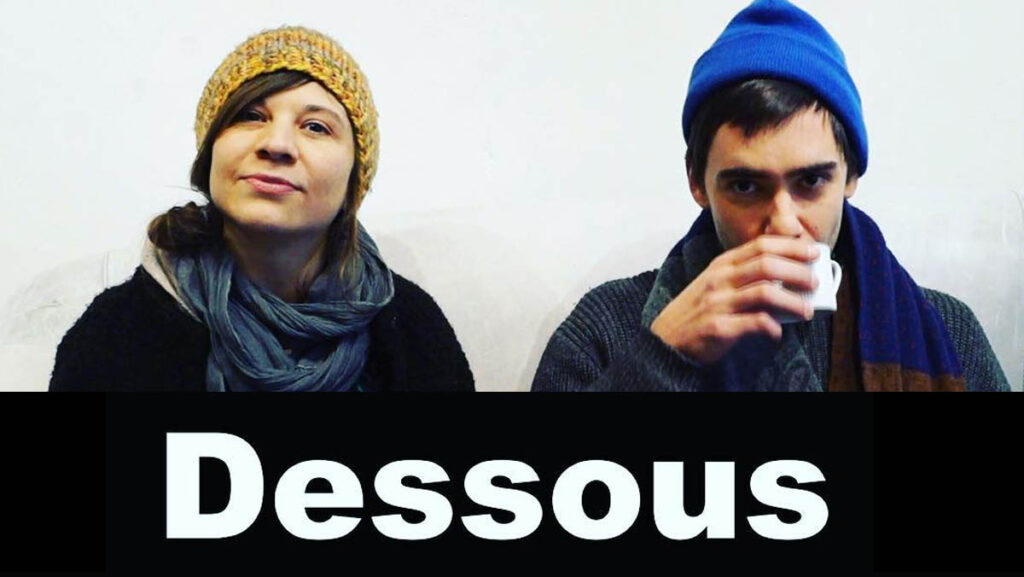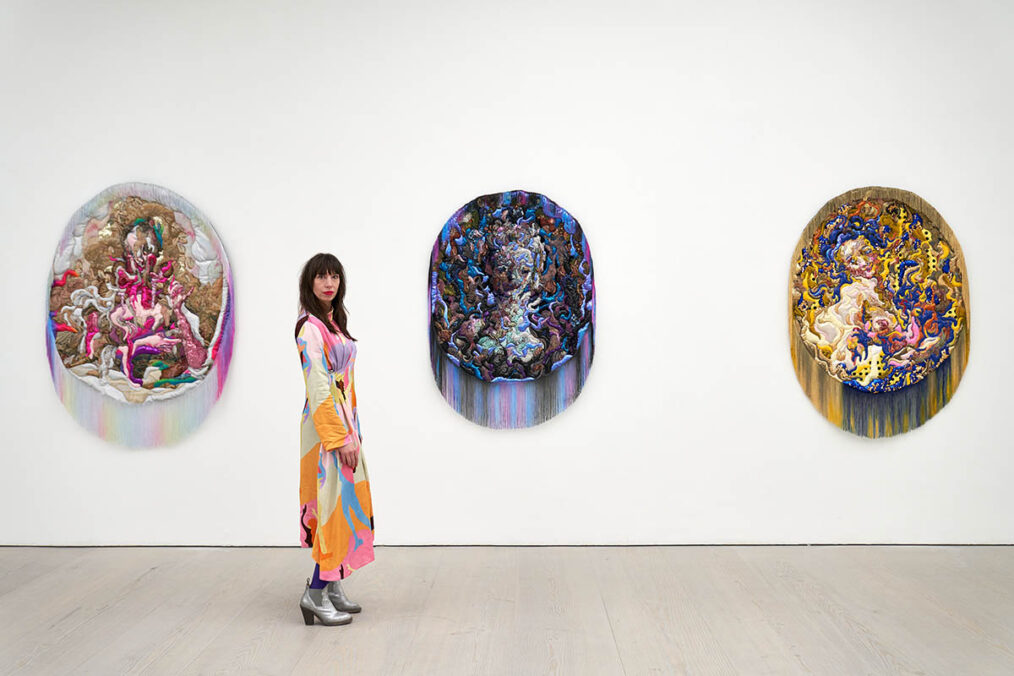
Von Freyburg is the winner of Robert Walters UK New Artists Award (2021) and exhibited at Saatchi Gallery, London. She was nominated for The Ingram Prize (2021) and took part in the PLOP x Cob. Winter Residency followed by an exhibition in November (2021). Von Freyburg’s work is in several private collections all over the world.
What inspired you to become an artist?
When I was around seven years old my mum gave me the opportunity to make a drawing for a fashion trend-book. This book was used at presentations for textile companies that she worked for. The feeling when I saw my drawing printed in these books was magical and empowering. I guess this planted the seed for wanting to be an artist and sharing my creations with others.
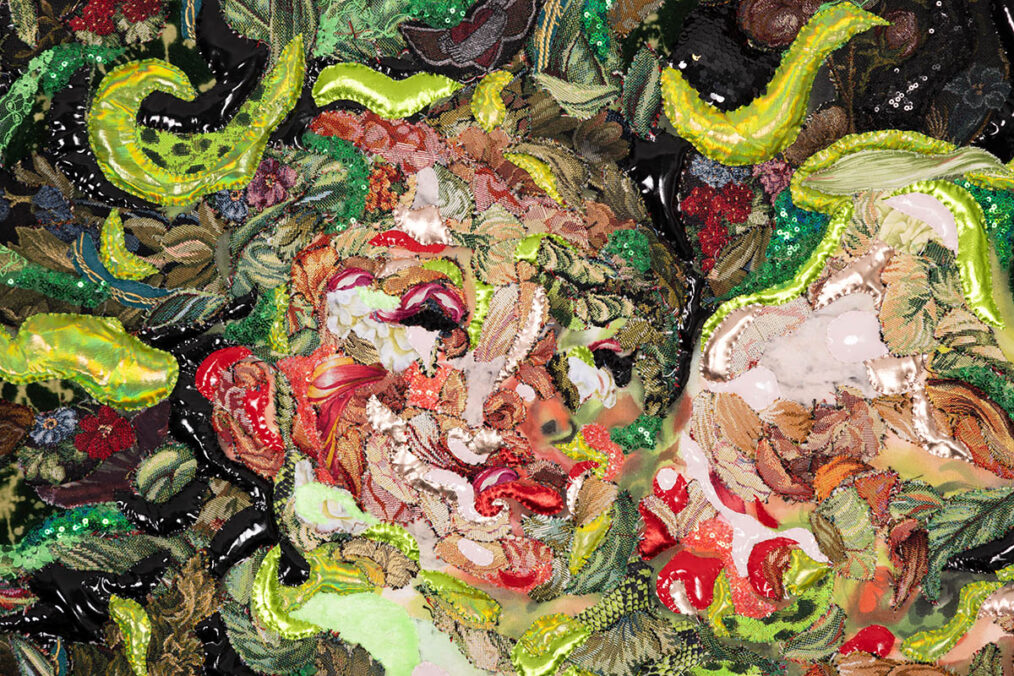
How do you see your work contributing to the ongoing discourse around femininity and the constructs of female identity?
Historically, textile and embroidery work contributed to creating femininity. Embellishment has been associated with the feminine, frivolous, and excessive, and was repressed within the rhetoric of Modernism. Detailing and fabric were viewed as decorative extras. I am interested in reclaiming and retaining the feminine identity around embroidery and textiles instead of dismissing them. I deliberately work with materials and themes that are traditionally considered feminine, domestic, decorative, and design oriented and take a new angle on that in a fine art context. Nowadays, in my opinion, female identity is created through the female gaze. In our modern world, we are overwhelmed by mass media that confront us with ever-changing beauty standards. The objectification of ourselves has evolved, and validation now is often achieved through material means such as fashion and plastic surgery. My work is influenced by the “opulence and candy sweet colours of the Rococo aesthetic,” which is not only an indulgence in but also a distortion of modern beauty standards. By using a quilting technique I want to create the impression of Botox or lip fillers. This results in strangely undulating faces and bodies made out of a variety of fast-fashion materials.
In my work, I play a lot on the visual language of seduction. By combining all these elements I aim to confront the viewer with their own investment in consumerism as a key aspect of modern-day femininity.
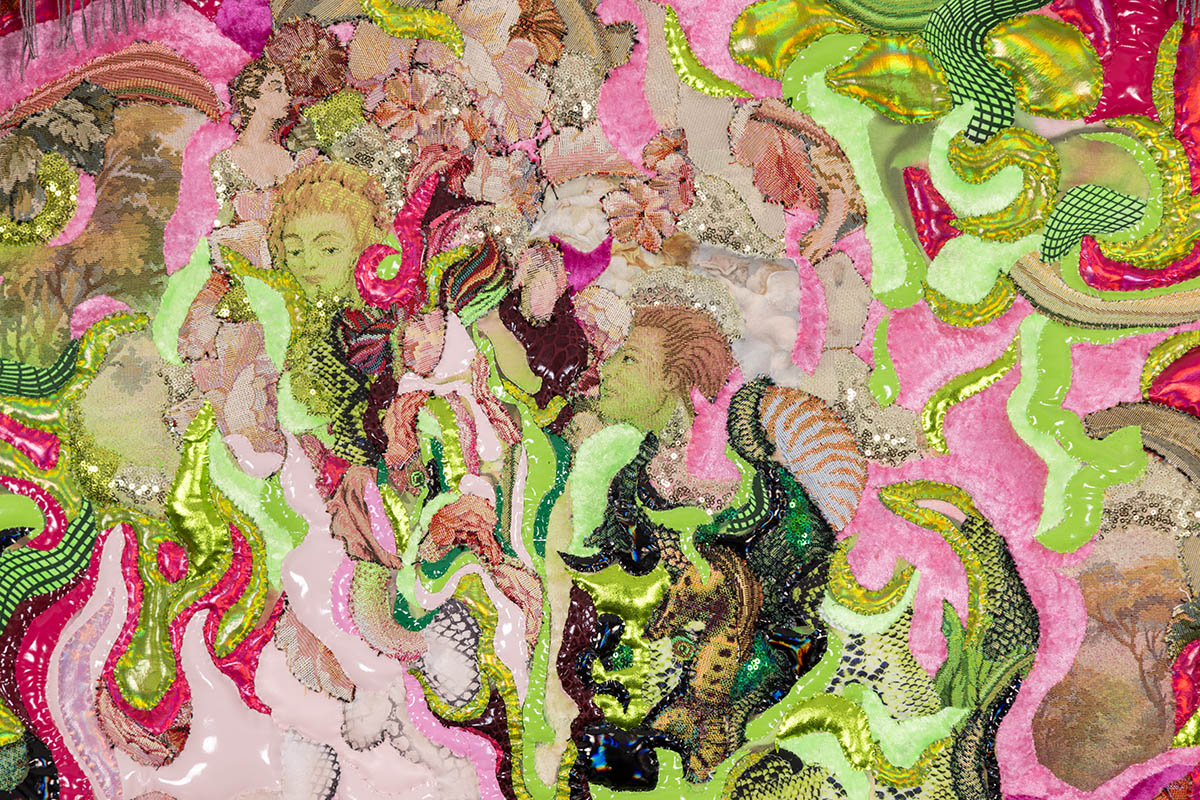
Your work often incorporates a mix of traditional and modern materials. How do you choose these materials and how do they contribute to the overall message of your artwork?
Every fabric has its own story in history and social connotations and can be even used politically. An ornament, fabric or colour can be considered as kitsch in one time period and in another seen as edgy and hip. I am particularly interested in blurring the lines between high and low art, cheap and luxurious, craft and art. For instance, I re purposed tapestry wall-hangings from the 70’s which I combined with painting technique to evoke a dialogue between painting and tapestry. I choose these Rococo style tapestries for their stereotype ideas of innocence and femininity, which I challenged by adding black BDSM lacquer faux leather to give some kinkiness to all its sweetness. When using a mix of fabrics like: woven tapestry, snake print, lace, fake leather and other fashion fabrics I can also make a link to the present day. With being unapologetic in my use of rich fabrics I am pushing against the accepted norms of fine art and at the same time being mindful and critical about fast fashion. My use of textiles is not only a conceptual way to make a statement about craft and its feminine associations, but I also want to reveal its artistic possibilities and material qualities: That all materials are equally important and permissible to make art with.
How do you approach combining textiles and painting in your work?
The idea to combine textiles with painting techniques stems from my intention to lift the hierarchy between craft and fine art. Tapestry weavings were always a by-product of for instance an original ‘Boucher’ painting. Even today painting as a medium is still the most valued art form. I literally challenge the medium by concealing my own paintings with fabrics. I use the under-painting as a guide on where to place and which fabric to choose. Appropriating Rococo’s masterpieces and turning them into fashion fabrics is my way to give a nod to painting.
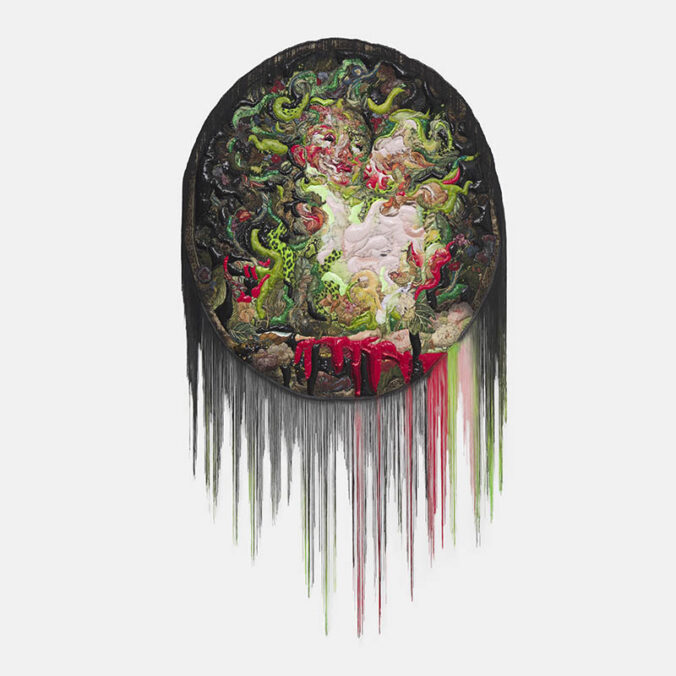
Anne von Freyburg 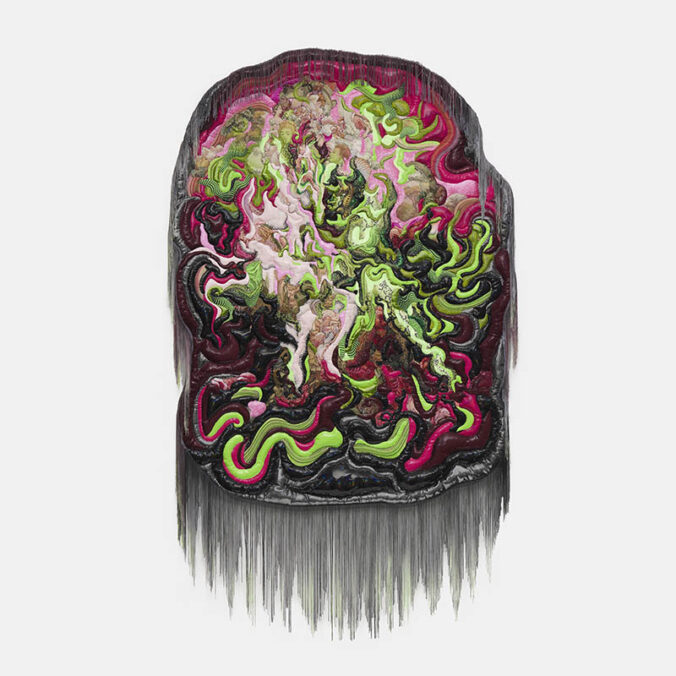
Anne von Freyburg
Can you talk about a particular piece or series of work that is especially meaningful to you?
What makes it stand out? The work ‘Trickster’ (after Fragonard, The Toilet of Venus) stands out for me because it is the first piece where I started using an irregular shape. It is a translation of ‘The Toilet of Venus” by Fragonard. It depicts Venus the goddess of love who is admiring herself in the mirror held by one of the three cherubs. The confrontation of the gaze of the figure in painting and the viewer has wide implications in feminist art history regarding the sexual politics of the gaze. It is argued that society conditions women to constantly ‘watch herself’ and to construct her identity through the eyes of the ‘surveyor’ as she becomes the ‘surveyed’. I wanted to transform these ideas around the gaze and point to theatrical/performed identities, showing a passion for the art of appearance using the work as a vehicle for fashioning and representing identity. I was asking myself what these ideas of women as the desired object has done to me. I reclaimed and subverted that idea by making it desirable for myself. I feminised and embellished the painting like a fetishised object and turned it into my own object of desire. I obscured the depiction of Venus in a more abstract way, where the figure dissolves in the rest of the painting. The work itself has a bodily presence, beautiful but grotesque at the same time. I enhanced this by giving it a fluid bodily shape without any constraints.
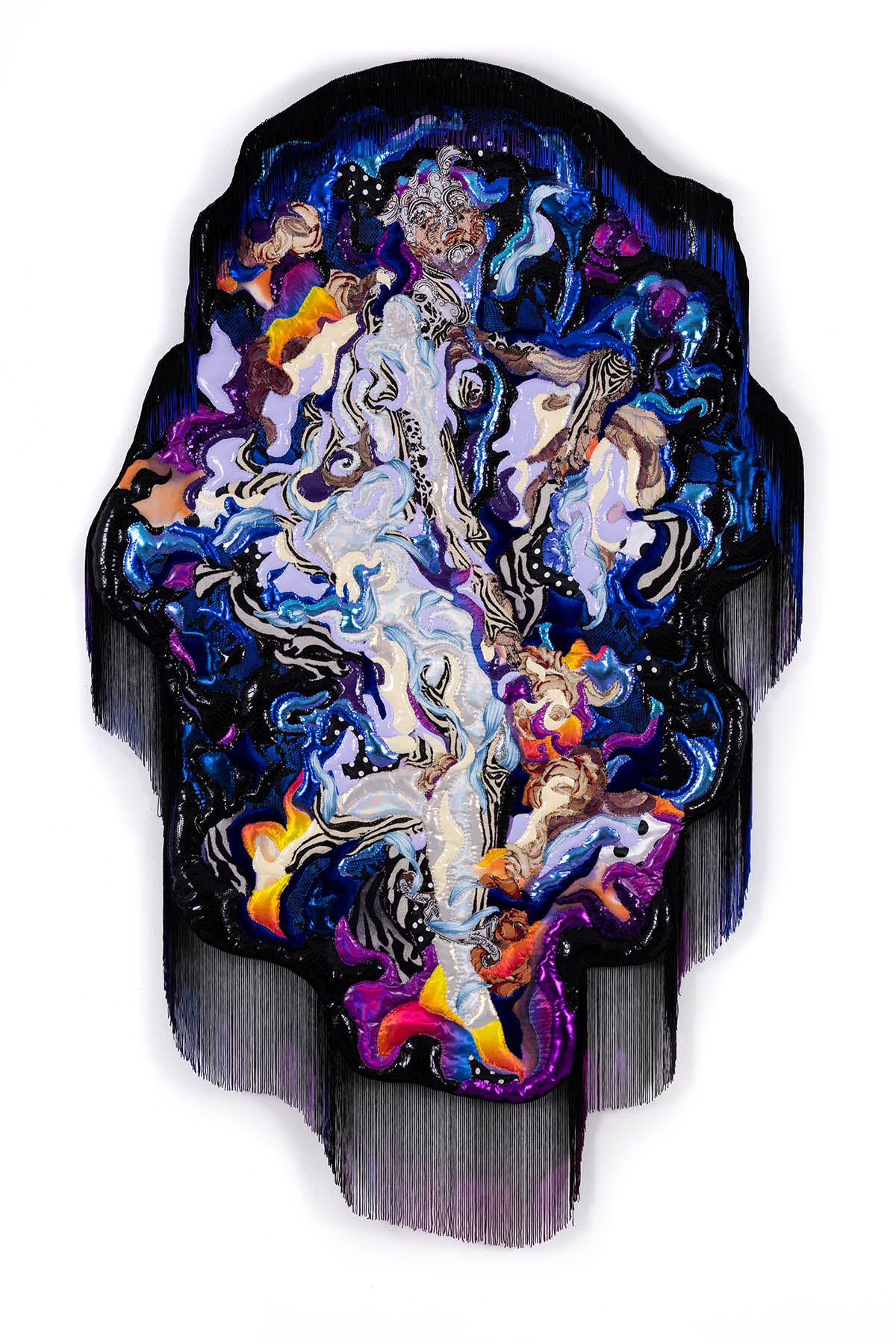
You also lived near Vienna for 3 years. What are your impressions? Is there a particular situation that you remember very well?
I lived in 2005 for a couple of years in Klosterneuburg, because of a relationship I had back then. My ex had an advertising company “Wien Nord’ in the city center who I often visited. I have great memories of the city with its beautiful Secession, Museums Kwartier and Nashmarkt. I also had my first exhibition with photographs at Park Shop on Mondscheingasse.
What are your future goals and aspirations for your career as an artist? Are there particular projects or collaborations that you would like to pursue?
At the moment my focus is on my first solo show with HOFA Gallery London on February the 1st 2024. For that exhibition, I am producing 14 new tapestry paintings in which I have taken on some new exciting directions. A piece I am making especially for that show is a huge textile wall installation of my take on the iconic painting ‘The Swing’ by Fragonard. In the near future, I will keep exhibiting my work in galleries and museums all over the globe. Still, a big dream of mine is to do an interesting collab with a fashion brand or shop, how amazing would that be?
Anne von Freyburg – www.annevonfreyburg.com, www.instagram.com/annevonfreyburg/





